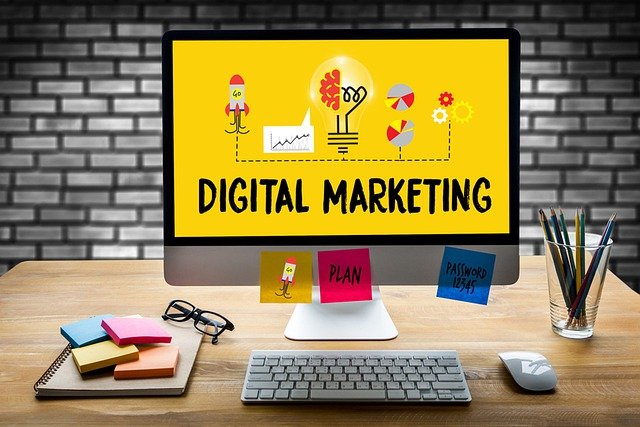Top Digital Marketing Strategies To Increase B2B Brand Awareness

A Digital Marketing plan is a road map for attaining your company’s marketing objectives using online channels like search and social media. The internet channels and digital marketing tactics you will utilize, as well as the amount you will spend on each, will be included in most strategic plans. If you take my advice, you should must visit YourDigiLab to get the best Digital Marketing Services.
What’s the difference between business-to-business and business-to-consumer brand awareness?
In several aspects, B2B marketing varies from B2C marketing. There is usually only one decision-maker when it comes to customer-facing B2C marketing. As a result, sales cycles are typically shorter, and buyer-brand connections can shift swiftly.
When dealing with many persons and departments, such as in B2B marketing, you must, on the other hand, communicate the value of your brand to a variety of stakeholders, each of whom has somewhat different opinions.
Furthermore, these decision-makers interact with a variety of departments and individuals within your organization. This means you must guarantee that your company’s reps are adequately trained so that they do not offer the wrong impression about your brand to other businesses.
Moreover, the B2B sales process will most certainly take longer than the B2C sales procedure. As a result, the conversation between a brand and a customer can be lengthy and nuanced, emphasizing the importance of consistency throughout B2B brand awareness efforts and communications.
The Unique Strategies of Increasing Brand Awareness in B2B Companies
Brand managers and marketers operating in the B2B sector confront more problems than those working in the B2C market. The B2B buyer is more affluent, and the risks are frequently larger. B2B decision-makers are compensated well for their work, and the sales process can be lengthy.
Building and boosting brand awareness in B2B also necessitates a greater understanding of your consumers’ issues, as well as marketing techniques that empathize and educate appropriately. Furthermore, a more sophisticated marketing approach must be backed up by adequate resources.
1. Create a well-polished B2B website
We’ve already stated that simply having a website is no longer sufficient. Whether your target market is 80 years old, 20 years old, or somewhere in between, you should have a professional website that looks current, performs well, and delivers the information needed about your company’s products or services.
2. Use of social media effectively
By posting great material that resonates, a strong social media strategy communicates your unique value proposition to your audience. Your brand’s story should be told to pique people’s attention and draw them in.
Maintain an active presence in the industry to keep updated and help drive the conversation. Including social media in your marketing mix can help you raise awareness, drive demand, and improve the effectiveness of your content marketing activities. No other medium can deliver the same level of immediate impact.
3. Use Hashtags
With hashtags on Facebook, Twitter, Instagram, and Pinterest, you may reach a large number of people. Users can click/search for those tags to identify similar posts if you add the hashtag #likethis in your post. #Tbt (Throwback Thursday) is a popular hashtag that you may use to promote your brand on Thursdays.
4. Search engine optimization (SEO)
The goal of an SEO strategy is to improve the ranking of website pages on search engines like Google and Bing. Concentrate on the keywords that decision-makers use to find information.
Target low-volume keywords with high cost-per-clicks (CPCs), create highly tactical content for important decision-makers and use social media to spread information to a wider audience.
A B2B SEO strategy requires numerous phases to develop and implement. First, get to know your buyer and create personas for employees in your target verticals’ firms. Second, learn how people look for what you’re selling and what keywords they use.
Finally, decide what themes and content you want to share with your audience. This is your chance to set yourself apart and shine a light on your solution.
5. Combine your offline and internet marketing efforts
Integrating and optimizing your online and offline marketing efforts is critical for getting the most bang for your marketing budget. You can connect the two smoothly to reach out to as many businesses as possible while still providing excellent customer service.
Conclusion
People will remember your items and mission if they are familiar with your brand. Blogs, infographics, and guest posts are all good places to start when it comes to content. Native advertising, social media, and influencer collaborations are all excellent ways to get your material out there. Finally, keep in mind that brand awareness isn’t a “one-and-done” process. Continue to experiment with new techniques to determine which ones have the greatest impact.




